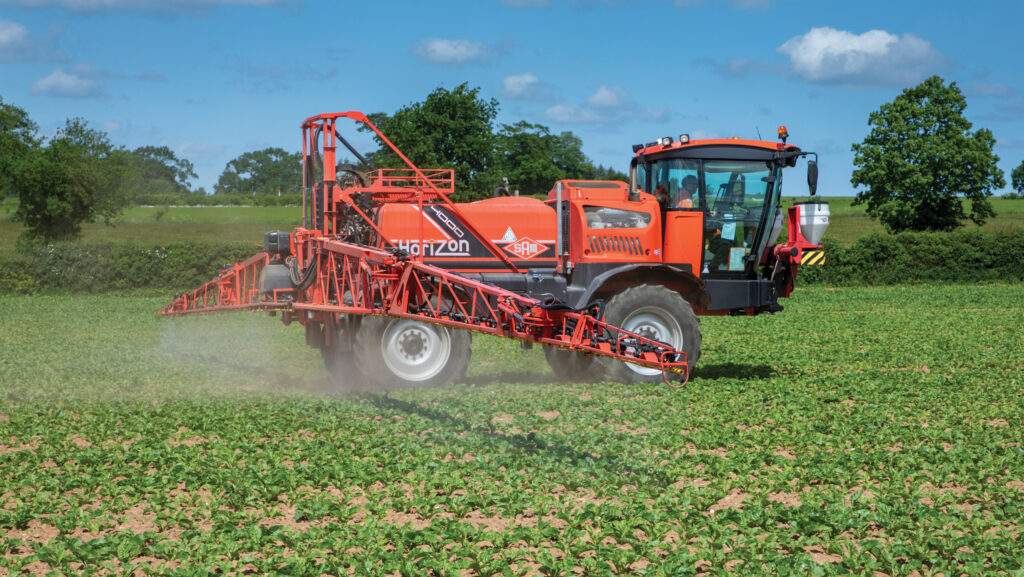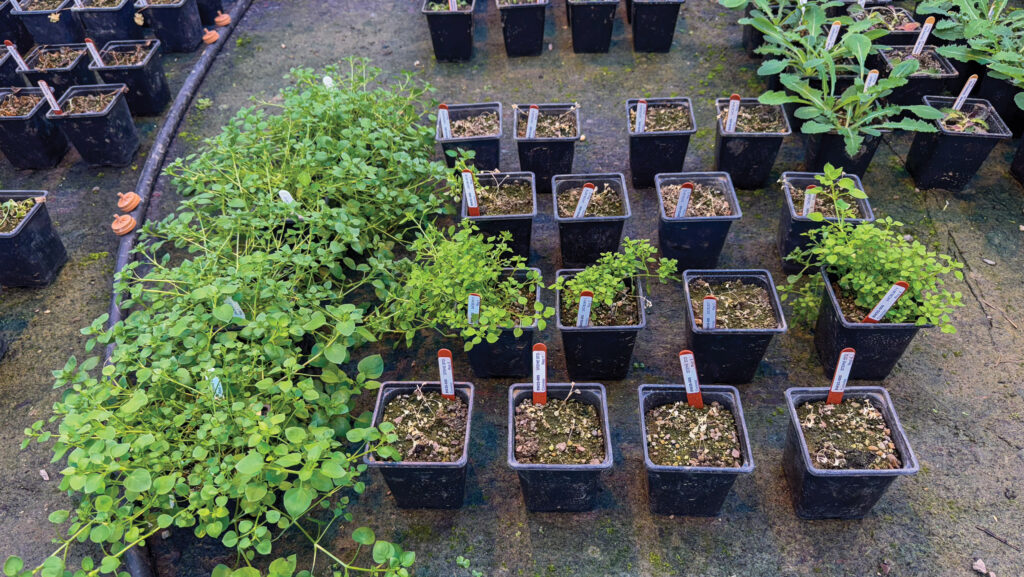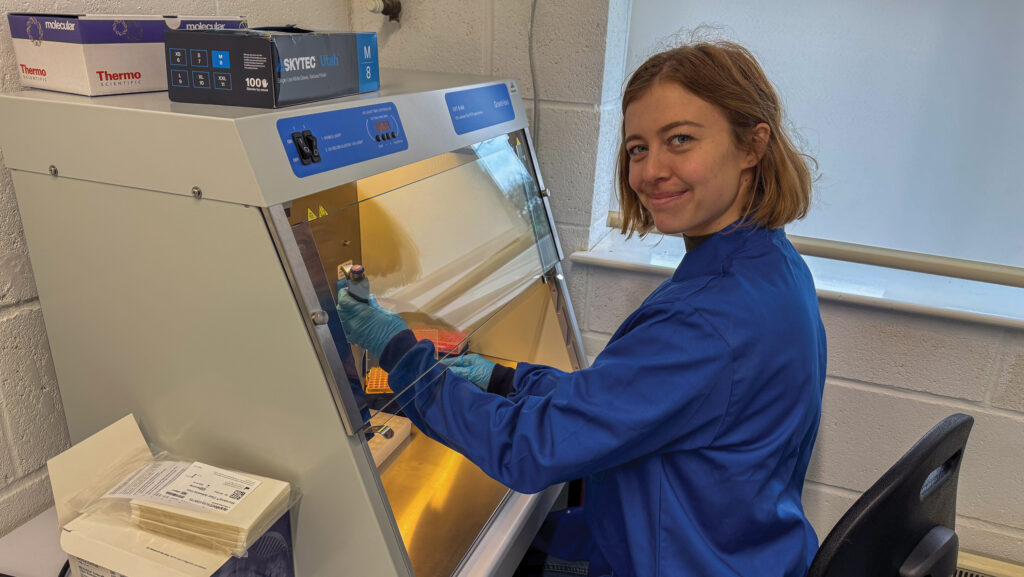How a new test helps tackle herbicide-resistant weeds
 © GNP
© GNP Growers will soon be able to make more informed broad-leaved weed herbicide choices with a new rapid-resistance testing method nearing commercial launch.
Much emphasis has been placed on improving knowledge and management of herbicide-resistant grassweeds over recent years and rightly so, given how damaging species such as blackgrass and Italian ryegrass have become.
Similar research into herbicide resistance in broad-leaved weeds hasn’t been completely neglected, with survey work investigating acetolactate synthase (ALS)-inhibitor resistant populations of chickweed, mayweed, and poppy last carried out in 2013.
See also: Advice on managing glyphosate resistance this spring
Concern about resistant broad-leaved weeds has intensified in recent seasons, largely because of the reliance on ALS chemistry right across the rotation and more species have joined the list (see “Growing concerns about groundsel”).
Heavy ALS-inhibitor use
Working across Norfolk, Suffolk and Cambridgeshire, AICC member Tim Martin of Apex Agronomy points out that active substances from this group are heavily relied on in cereals, oilseed rape, grass, maize, potatoes, and vegetable crops.
In many cases, ALS inhibitors, such as sulfonylureas (SU), are now the main thrust of weed control programmes.
One example is when planting Conviso Smart sugar beet varieties, which are tolerant to ALS herbicides and allow ALS product Conviso One (foramsulfuron + thiencarbazone) to often be used alone for weed control.
In cereals, in recent years, significant stacks of different herbicides have been applied in the autumn to take out a large proportion of pernicious grassweeds ahead of spring.
However, recent wet autumns have resulted in growers missing the autumn weed control window, forcing a default to spring-applied chemistry – largely ALS inhibitors.
“Agronomists have commented that they didn’t really have a problem with broad-leaved weeds until last year when autumn herbicides went out the window,” Tim explains.
“All of a sudden, we are completely reliant on SUs and weeds were left uncontrolled, so we’ve clearly been masking the problem. Across the rotation we need to be mixing up chemistry and not over-relying on that one group.”

© Adas
Accelerating resistance
Focusing on sugar beet, British Sugar’s weed control specialist Pam Chambers says historically, herbicide resistance in broad-leaved weeds has not been a problem because tank-mixing different modes of action was common practice.
However, with Conviso Smart varieties growing in popularity (estimated to make up 25% of the beet area in 2025), reports of weeds surviving applications of Conviso One are increasingly common.
Initially, the main driver for Smart varieties was to control weed beet, enabling growers to continue production on land where populations had become uneconomic or impractical to control by hand-pulling, weed-wiping and mechanical hoeing, or cutting.
The system’s simplicity is widening its appeal, as weeds can be controlled with one hit of Conviso One instead of a programme of conventional chemistry.
“This is potentially accelerating the development of ALS resistance in broad-leaved weeds,” says Pam.
Common ALS-inhibitor herbicides in UK cropping |
|||
|
Crops |
Actives |
Subgroups |
Product examples |
|
Clearfield oilseed rape, peas and beans |
Imazamox |
Imidazolines |
Cleranda*, Nirvana* |
|
Forage maize, potato |
Rimsulfuron |
Sulfonylureas |
Titus |
|
Forage maize |
Nicosulfuron |
Sulfonylureas |
Samson, Fornet 6 OD |
|
Cereals, linseed |
Metsulfuron |
Sulfonylureas |
Ally SX, Accurate |
|
Cereals |
Florasulam |
Triazolopyrimidines – type 1 |
Boxer, Broadway Star* |
|
Fodder beet, sugar beet |
Foramsulfuron + thiencarbazone |
Sulfonylureas + triazolinones |
Conviso One |
|
Fodder beet, sugar beet |
Triflusulfuron |
Sulfonylureas |
Debut |
|
Grassland |
Thifensulfuron |
Sulfonylureas |
Harmony SX |
| * Contain an additional herbicide with alternative mode of action. | |||
Traditional testing process
To address the issue, the British Sugar field team have been working with independent agronomists and Adas, sampling and testing suspect broad-leaved weed species from sugar beet fields, including chickweed, mayweed, poppy and groundsel.
In 2024, Adas principal field research scientist Douglas Brown ran the testing through the current commercial pot test process.
This involves germinating seed in the glasshouse, transplanting seedlings into pots, then treating with herbicide at growth stage 14-16 (4-6 true leaves).
Douglas adds that treatments are applied as close to the optimum growth stage as possible and technical specifications of the spray itself are optimised, using a medium droplet size and water rate of 200 litres/ha for good coverage.
“Conditions afterwards are key. There’s no watering of the weeds for 24 hours so the herbicide dries well on the leaf, and they then go back into a temperature-controlled glasshouse with regular watering as well.
“It’s not like a field situation where application might be in suboptimal conditions. We ensure everything is perfect to observe the herbicide’s true effect.”
Finally, the effect is compared to a susceptible reference population kept in stock at the Adas Boxworth site. Observation of significantly reduced efficacy is likely to be due to herbicide resistance.
Time consuming
Katy Hebditch, Adas weed science consultant, says while the glasshouse herbicide resistance test is very robust, it is labour intensive and lengthy, so results can’t have an impact on weed management until the following season.
The current process also requires agronomists or growers to wait until suspect plants have matured so they can collect seeds, but this is often at times when they would not typically be visiting fields, such as close to cereal harvest.
Unlike grassweeds, broad-leaved weeds are often present at multiple growth stages through the season, which adds to the complexity.
Cost is another factor, with the glasshouse method costing about £150 a sample, which puts growers and agronomists off testing for broad-leaved weed resistance altogether.
This led Katy and the weed science team at Adas to set about the development of a test that eases the burden of sampling from the field, providing a much faster result and for less cost.
Practically, this will allow growers to adjust their management choices based on what they see in the field in the same season – the aim being to avoid ALS herbicides that won’t work on certain species due to resistance.
Conversely, if resistance is not found, it will give confidence to continue using certain herbicides, and address the other issues that can lead to poor control, such as timing or application quality.

Katy Hebditch © Adas
Molecular test
A new rapid molecular test for target site resistance in poppies is now being validated, with the hope other species including chickweed, mayweed, groundsel, and fat hen, will be added soon.
Katy says it will allow agronomists or growers to walk crops after a spring ALS herbicide application, snip off the leaves of any surviving weeds, dry them out and send them to Boxworth for testing.
“We would then take the leaves, extract the DNA, send it off for sequencing, looking for the presence of the genetic mutations that are behind ALS resistance,” she explains.
“You’d see the results within a few weeks, compared with up to a year with a standard glasshouse test.”
According to latest knowledge, Katy says two target site genetic mutations are responsible for ALS resistance in broad-leaved weeds worldwide, the Pro197 mutation and the Trp574 mutation.
There are subtle differences between the two. The presence of 197 tends to confer insensitivity to the SU ALS inhibitor subgroup, but not the triazolopyrimidines type-1 subgroup, which includes florasulam.
“Where the 574 gene is present, you tend to get cross-resistance to both subgroups. This is another reason why this molecular test will be very useful, as you can start to indicate whether its ALS resistance or just SUs,” she adds.
Pam says that a rapid test for ALS resistance in broad-leaved weeds would be particularly useful for sugar beet growers when choosing which varieties to grow.
“Knowing whether ALS-resistant species are present will help decide between a Smart or conventional variety.
“If you must grow a smart variety, because of a weed beet issue, then that knowledge will allow you to factor in the extra cost of conventional chemistry needed to control those resistant weeds.
“Similarly, if you’re going down the conventional route, you can make sure you’re using the different modes of action available to you in sugar beet to get adequate control,” she explains.
Growing concerns about groundsel
Weed scientists are getting more and more questions about poor groundsel control, and in the British Sugar and Adas broad-leaved weed resistance project in 2024, the species represented the greatest number of samples.
Adas weed scientist Douglas Brown says the 2024 samples were grown and treated with metsulfuron in the glasshouse, and populations with significantly reduced sensitivity were observed.
“After initial stunting, plants grew away from the herbicide treatment. Whether this represents the first case of herbicide resistance in a UK groundsel population, we aren’t sure yet. More testing is required to validate the results,” he explains.
If confirmed, it would join the list of chickweed, mayweed, and poppy on the list of ALS-insensitive, broad-leaved weeds in the UK, with other species – including redshank, cranesbill, and sow thistle – also under investigation.
This spring, Adas advises growers to focus on good application timing to maximise herbicide performance on groundsel, targeting young and actively-growing plants where practically possible.

© Blackthorn Arable

